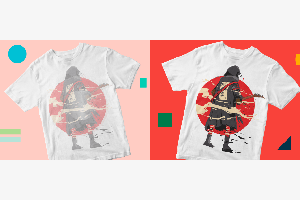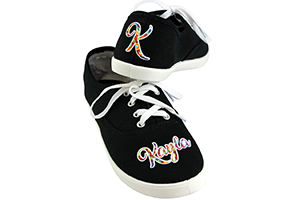February 23, 2017
The sublimation process is a chemical one that depends on molecular bonding. When used for apparel decoration it requires precise heat-press settings for three aspects: time, temperature and pressure. A small variance in one of these parameters can affect image quality.
Thus, you must choose a high-quality sublimation heat press that can deliver and maintain the necessary settings for every job, every time. The good news is they are available in different sizes, configurations and degrees of quality.
A heat press may look like an unsophisticated piece of equipment, but what you don’t see makes a difference when it comes to reliability and results.
Apparel Decoration Heat-Pressing: Time
All heat presses include programmable timers. Most automatically activate when the press is closed and a buzzer sounds when the time has expired so the operator knows to open it.
Some heat presses open automatically when time has elapsed. This may cause the transfer paper to slightly shift on the substrate and result in image “ghosting,” which can ruin the item being sublimated. If using such a heat press, consider disabling the auto-open feature. If you keep it enabled, ensure the transfer is properly secured to the substrate.
Apparel Decoration Heat-Pressing: Temperature
Most sublimation products require a constant temperature of 400 degrees F for one minute. A variation of just a few degrees may affect the final image’s colors and details.
Heat presses consist of upper and lower platens. The former contains heating elements, whereas the latter supports the substrate during pressing. (Note: On some presses, both upper and lower platens are heated.) Quality heat presses have reliable heating elements that deliver accurate temperature with minor fluctuations (drifting).
In addition, the heating elements ensure the upper-platen temperature is consistent across the entire surface, thereby preventing “cold spots,” which can cause uneven color in a sublimated image.
Some heat presses use lower-quality elements that are spaced farther apart in order to lower costs. The price tag — and output quality — for these units can be significantly lower. For other applications, such as heat transfers, this may be suitable, but not for sublimation.
Apparel Decoration Heat-Pressing: Pressure
In addition to delivering heat, the upper platen also produces pressure on the substrate. It’s critical that the platen is flat, even and constructed of quality materials so that it doesn’t “give” during the pressing process.
Inconsistent or uneven pressure will affect sublimation quality, leading to color imbalance, imperfect details and possible ghosting.
Lower-quality heat presses tend to be made with less-substantial materials to save on cost. For most other applications, pressure is not a major factor, so an uneven platen will have little, if any, effect. But it is a critical aspect of high-quality sublimation.
Decorated Apparel Heat-Press Characteristics
When choosing a heat press for sublimation, focus on the size, shape and thickness of what you want to produce. Size obviously is a major factor, since the heat press must be large enough to completely cover the area being decorated. Curved items, such as mugs, require a different pressing methodology than flat items, and thick substrates require different solutions than thin ones.
Consider the following physical factors when comparing heat presses:
1. Apparel Heat Press Platen Configuration
Most sublimation substrates are pressed using a flat heat press, many of which are available in several sizes and three different platen configurations: clam-shell, swing-away and drawer.
Clam-shell units are the most common heat-press type. The upper and lower platens are connected by a hinge, and the press opens and closes in an angular fashion — thus, the name. These units are suitable for thin substrates, but may have uneven pressure on thicker items like plaques, ceramic tiles, flip flops, etc. This is because more pressure will be applied close to the hinge, and less pressure farther from it.
The result may be uneven imaging and unbalanced colors. Some clam-shell models feature a compound hinge system that makes them more suitable for thicker items.
Swing-away units’ upper platens are mounted on an arm to be moved straight up and down. That motion exerts equal pressure across the substrate’s entire surface, regardless of its thickness. In addition, when the heat press is opened, the upper platen can swing to one side, making it easier to access the lower platen for placing and aligning substrates.
Drawer heat presses also have a mounted upper platen that can be lifted and lowered, but doesn’t swing. Instead, the lower platen pulls forward, enabling easy access. This type of unit works well for thin and thick substrates.
2. Apparel Heat Press Platen Size
Platen size is the most important factor when choosing a heat press, as it determines the maximum image sizes that can be applied. Equal heat across the entire surface is important for high-quality sublimation. However, the temperature can decrease along the heat press’s outer edges, so only work with images that are smaller than the platen’s size.
With a quality heat press, you should assume a 1-inch buffer zone on all four sides. (This may be overly cautious, but sublimation is a heat-sensitive process.) Thus, the usable heating area of a 20″ x 24″ press would be 18″ x 22″.
As a general rule, the heat press should be at least 1 inch larger on all four sides than the printer’s maximum field size. For example, if the printer is capable of 13″ x 19″ printing, then the heat press size should be at least 14″ x 20″.
3. Apparel Heat Press – Manual or Pneumatic
The recommended pressure for sublimation on most substrates is 40 psi. However, most presses do not have pressure indicators, so medium pressure generally will suffice.
Most heat presses use a mechanical closing system that is manually operated. Platen pressure is controlled by adjusting a knob, which activates a jack-screw system that raises or lowers the upper platen in relation to the lower platen. This controls the spacing between both surfaces when the press is closed, which determines how much pressure is applied to the substrate’s surface. The gap should be increased or decreased, depending on the item’s thickness or thinness.
Some heat presses are available as pneumatically controlled systems. They use air pressure to close the platen and apply a specific amount of pressure to the substrate surface. At the end of the pressing process, the system automatically opens.
Pneumatic systems offer two distinct advantages over manual ones. First, the operator doesn’t have to use physical exertion to operate the system, which reduces the chances of repetitive-motion injuries. Second, precise pressure settings can be specified, which makes it quick and easy to set up different types of substrates for production. This also makes it possible to replicate pressure parameters on future jobs.
In contrast, manual pressure settings are based on feel, not precision. This leads to trial and error when it comes to setting up jobs, and also makes it difficult to replicate exact settings on future orders.
The heat press is a critical part of sublimation production, and you should focus on purchasing a reliable unit that will deliver precise temperature and even pressure on each job. Select a unit from a reliable source that offers technical support, parts and service. Focus on the long-term investment rather than the short-term purchase price.
Award-winning author and international speaker Jimmy Lamb has more than 20 years of apparel decoration experience. He currently is manager of communications for Sawgrass Technologies, Charleston, South Carolina. Updated April 21, 2023.
Specialty Heat-Pressing Products
Curved and rounded products require special heat presses, such as a mug or cap sublimation heat press, which have curved surfaces designed to fit those products. Combination heat presses also offer flat- and curved-pressing capabilities with specialized attachments.
Specialty 3-D heat presses also are designed for products with curved surfaces. In addition, they can apply images to multiple surfaces of a single substrate, such as the top and sides of a cellphone cover. This type of press uses a vacuum system, not a platen, to pull a membrane tight around the substrate and then applies convection heat.
Wraps can be used with some rounded products as an alternative to presses. Transfers are secured to the substrate using a special high-temperature wrap that surrounds the item and latches into place. The substrate is then placed in a convection oven for an extended period of time — typically 12-15 minutes. Wraps are available in multiple sizes and can be used for products such as mugs, pet food bowls, cookie jars, etc.
Finally, a rotary press — also known as a calendar press — is a continuous-feed unit used for pressing fabric as it comes off a roll-style sublimation printer. The fabric passes through a series of heated rollers that also “press” the sublimation. It is typically used for large-volume fabric pressing.
April 12, 2023 | Sublimation
As you work toward becoming an experienced dye-sublimation apparel, general merch or customized promotional items decorator, you may come across one or more obstacles, like your transfers coming out blurry, dull or faded.
FULL STORY
June 1, 2022 | Sublimation
How many times have you wished that you could sublimate a product that wasn’t polymer-based or polymer-coated.
FULL STORY
October 8, 2021 | Sublimation
I think the philosophy of lagniappe should be taught at every school and practiced by every business. A French word meaning “unexpected extra gift,” lagniappe often is used in Louisiana. In fact, sublimation decoration is a fantastic example of this.
FULL STORY




